Day 2 (23th October 2012)
Related posts: Seoul Day 1, Day 2, Day 3, Day 4, Day 5
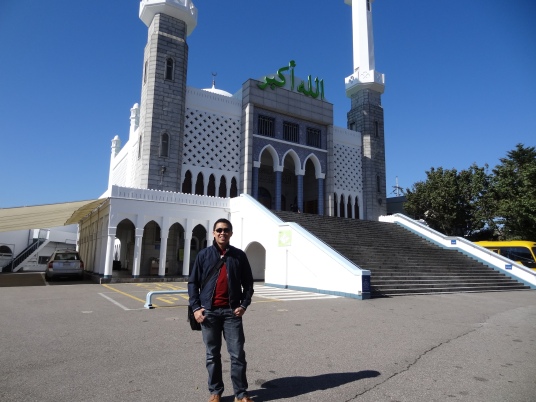
We started the day by exploring the area surrounding Seoul Central Mosque in Itaewon. The mosque was built in 1976. There are around 30,000 indigenous Korean Muslims, apart from around 5,000+ foreign Muslims that come to Korea for work. There were lots of Halal restaurants and Muslim services (e.g. Hajj / Umrah) provided at the areas around the mosque.
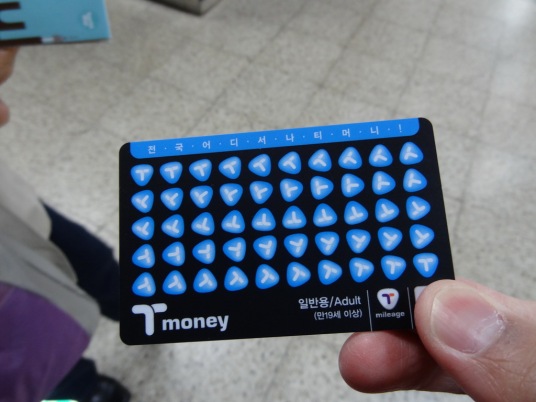
From there, we went to Itaewon metro station. We bought the T-Money card (similar to Hong Kong’s Octopus card) and reloaded at the machine. As I mentioned previously, communication is a major hurdle in Korea. I had to use a lot of hand gestures and finger-signs to tell them what I want. Even the tourist counter (at Itaewon Station) spoke only basic English. Despite that, I am pleased to see romanized/English writing provided at almost all Korean signage (for roads, metro stations, directions etc). It sure helps us tourist to find our way around. I was told in Japan everything is in Japanese characters! Haha, can’t wait to experience that!

After topping up the T-Money card and figuring out the metro system, we managed to hop a few stations and arrived at National Museum of Korea. The museum is massive. The entrance was free so we collected our audio guides and went off exploring.
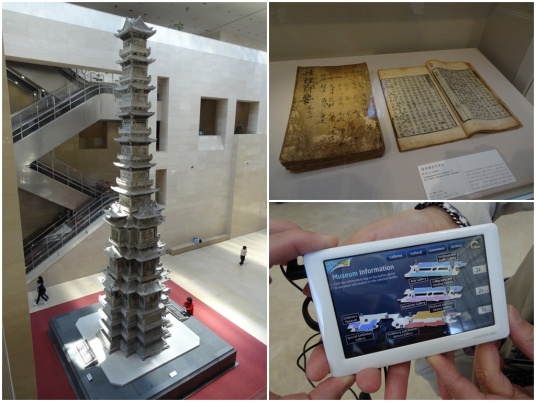
The Koreans are particularly proud of their Hangul alphabets. Big sections were dedicated to the history of the Hangul (top right photo). The Hangul writing system was created by King Sejong the Great, during the Joseon Dynasty in 1443. Prior to that the Korean people have been using Chinese characters (referred to as “hanja” in Korean). The hanja were too complicated and it resulted in a large portion of the population being illiterate. I’ve studied Mandarin 2 years ago and I totally understand the complications of the ideogram-based Chinese characters.

Rather than memorising nearly 2000+ characters to be able to read and write in hanja, King Sejong created a simplified writing system consisting of only 24 characters, written in “blocks” to shorten the word. As you can see above, the combination of these “blocks” are a lot, but the fundamentals to read and write are just 24 characters. The idea is for the normal peasant to be able to learn it “within days”. King Sejong’s vision was for all Koreans to be able to read and write. I truly admire such vision. I envy the Koreans for being able to create a writing system specifically for their language. Not many civilisations achieved that. The Koreans show their appreciation for the Hangul by having a national day called “Hangul Day” on 9 October every year. How cool is that!
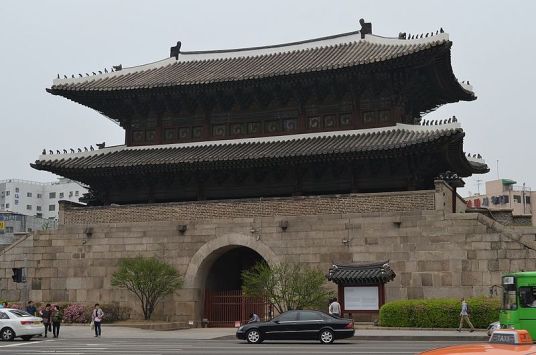
From the National Museum, we went to Dongdaemun (also spelled as “Tongdaemun”). From Dongdaemun metro station, we saw the Heunginjimun Gate (also known as the Dongdaemun Gate). It is one of the Eight Gates of Seoul, built in 1398CE. These gates were part of the Fortress Wall of Seoul that protected the kingdom during the Joseon Dynasty (1392CE – 1897CE).
One of the reasons I wanted to visit Dongdaemun was to search for the famous Korean silk. I didn’t realise that Dongdaemun was massive and turns out the silk market is located on the other end of the area. Now that we know where the silk markets are, to save time and maximise our day, we hopped on the metro and moved on to the next destination. I plan to come again on Friday before we leave.
After exploring the area surrounding Dongdaemun Gate, we took the metro to Myeong-dong. Myeong-dong is a famous shopping district in Seoul.
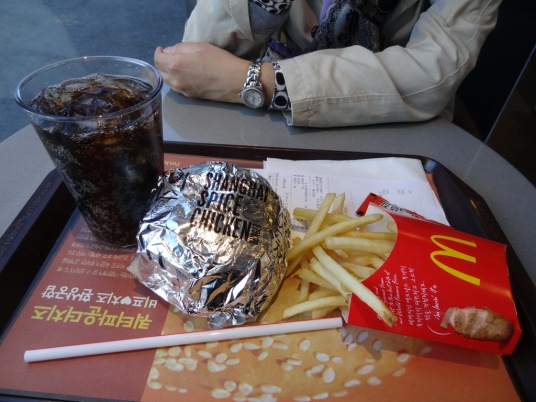
We had lunch at McDonalds in Myeong-dong. The Shanghai Spice Chicken burger was quite tasty! We don’t have this in Malaysia. They also have their own “Bulgogi Burger”.

After that we went on to explore the many rows of shops in the area. I discovered that shopping for clothing might be a problem as the biggest size, for ladies especially, is L. And Korean L is smaller compared to the general L (by Western measurement).
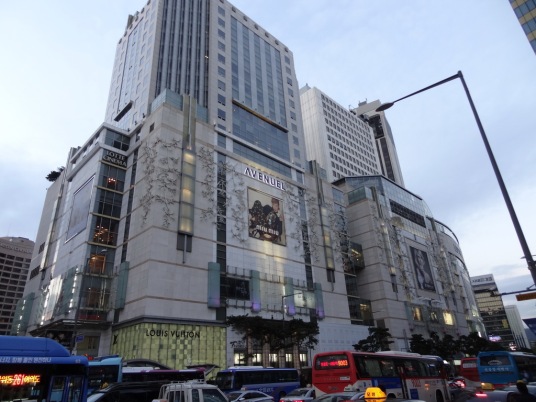
Similar to Singapore’s Orchard Road or London’s Oxford Street, Myeong-dong houses all the major boutiques, including the famous Avenue L and Lotte Mall.
I walked into SK Communications (a major telco in Korea, similar to Maxis in Malaysia or O2 in the UK) to enquire on purchasing a simcard. While waiting in the queue, the guy in front of me was a middle-easterner. I was surprised that he spoke fluent Korean at the counter! When my turn arrived, I asked the counter girl if she speaks English. She made a gesture that she doesn’t understand what I’m saying, and after checking with her other colleagues, none could help her out. She then used her Samsung Galaxy S3 as a translator. I had to type in my question in English, click “translate”, and she would read it. She would then answer it by typing in Korean and the software would translate to English for me. We had to push the S3 phone back and forth for about 4 times until I was able to get an answer. To be honest I find it quite amusing. Haha!
While we did visit a number of places today, we got really tired in the end. My mum didn’t enjoy hopping metro stations to get to our destination. She’s not used to it. Fortunately, tomorrow we’ll be having a full day tour in the city, followed by a half day tour on Thursday (day 4). These tours were arranged via Air Asia’s mix-and-match holiday packages (AirAsiaGo). I’ve used it previously in Indonesia, Cambodia and Vietnam. AirAsiaGo packages has never disappoint me. I look forward to our tour tomorrow!
I have lived here for two years and you taught me some things. Great post!
Hi brentdsheffi! Good to hear that. Thanks for visiting my blog! 🙂
Are you a muslim? mcdonald in Korea is not halal. I have lived here for two years and never go to mcd. it is hard to find halal food in korea. be careful bro 🙂
Thanks for clarifying. Was excited to know that its halal but actually not 😅